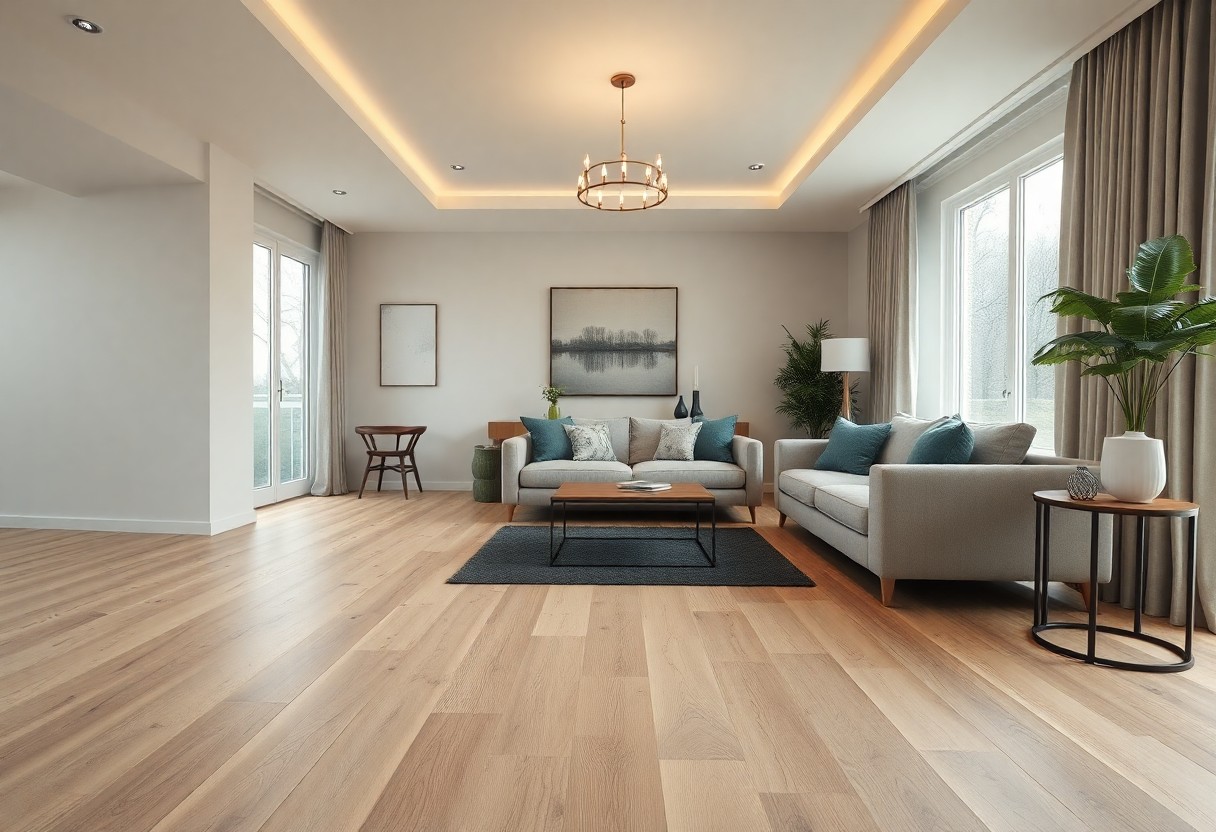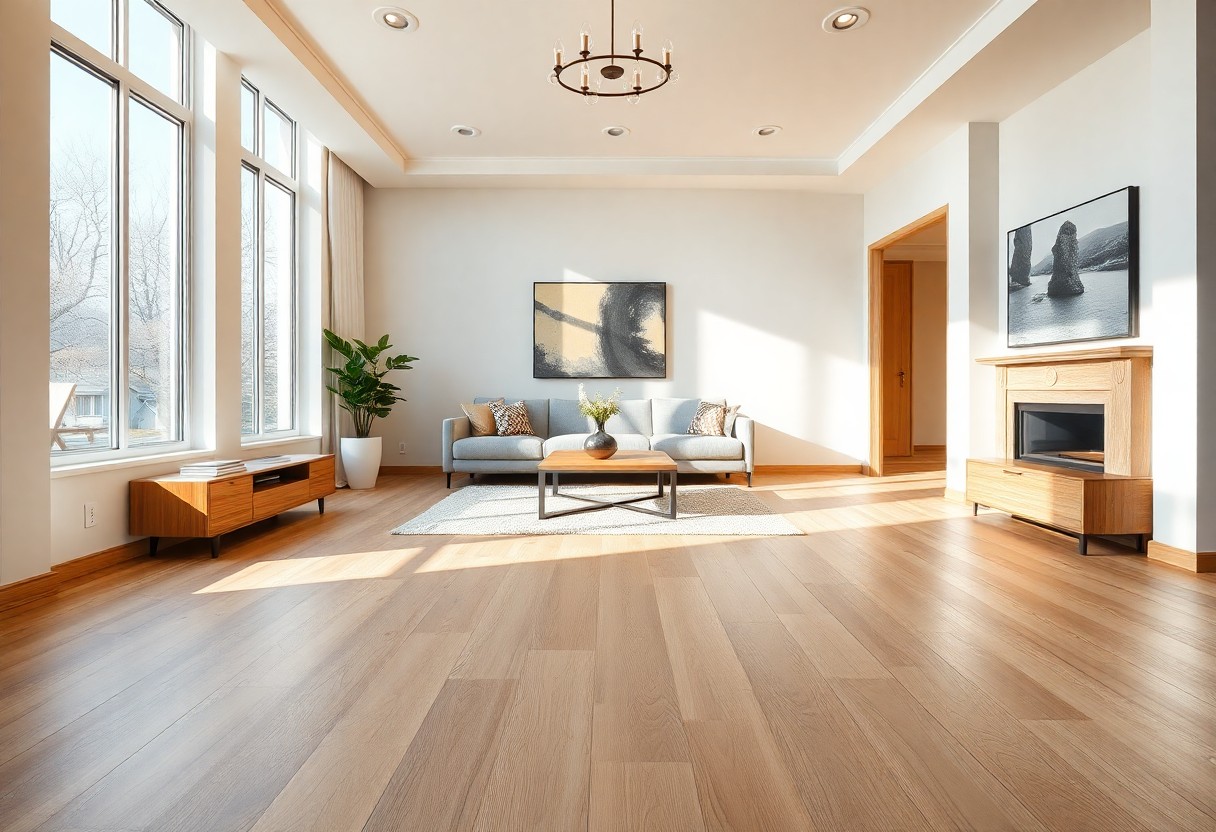Just imagine transforming your home with the elegance and strength of white oak flooring. Known for its timeless beauty and remarkable durability, white oak offers a versatile option that complements any decor style. This hardwood not only enhances the aesthetic appeal of your living spaces but also withstands the rigors of daily life, making it a smart investment for your home. Explore the many benefits of choosing white oak flooring and discover why it’s a preferred choice for homeowners like you.
Overview of White Oak Flooring
White oak flooring stands out for its remarkable blend of aesthetic appeal and robust performance. Known for its unique grain patterns and rich color variations, it complements a wide range of interior styles, from traditional to contemporary. Beyond looks, white oak boasts impressive durability, making it a choice that can withstand the rigors of everyday life while maintaining its beauty.
Characteristics and Benefits
White oak is characterized by its dense, hard structure, offering superior strength and resistance to wear. This type of wood also has a natural resistance to moisture, making it ideal for various climates. Additionally, its ability to be stained in different hues allows you to customize its appearance to fit your design preferences, ensuring it enhances your home for years to come.
Comparison with Other Flooring Options
When comparing white oak with other flooring materials, its advantages become evident. Unlike softer woods like pine, white oak resists dents and scratches effectively. In comparison to engineered hardwood, solid white oak is easier to refinish multiple times, ensuring longevity. Furthermore, chalky vinyl options may look appealing, but they often lack the timeless elegance and natural feel that come with genuine wood flooring.
Comparison with Other Flooring Options
| Flooring Type | Pros & Cons |
|---|---|
| White Oak | Durable, refinishable, aesthetic variety |
| Pine | Soft, less durable, less expensive |
| Engineered Hardwood | Stable, limited refinishing, variable quality |
| Vinyl Flooring | Budget-friendly, but lacks authenticity |
In your search for the perfect flooring, you’ll find that while softer woods like pine may save on initial costs, they require more frequent replacements and repairs. Engineered hardwoods provide stability but might not endure like white oak when subjected to wear and tear. Vinyl flooring, while easy to install and maintain, falls short in offering the warmth and charm that only natural wood can bring into your living space.
Styles and Finishes
Your choice in styles and finishes for white oak flooring can dramatically influence the overall ambiance of your space. With options ranging from classic to contemporary, you can select the perfect aesthetic that complements your design vision. Matte, satin, or glossy finishes enhance the natural beauty of the wood, while various styles such as wide planks or herringbone patterns add unique character. The versatility of white oak allows you to achieve a custom look that suits your personal style and interior design.
Natural and Stained Finishes
Natural finishes provide a timeless appeal, showcasing the inherent beauty of white oak’s grain and texture. Alternatively, stained finishes allow you to customize the color, enabling you to match your flooring to existing decor or personal preferences. Light stains emphasize the wood’s natural hues, while darker shades can create a dramatic contrast, enhancing your room’s atmosphere.
Texture and Grain Patterns
The texture and grain patterns of white oak flooring contribute significantly to its charm. Each plank boasts unique variations, with straight grains being the most common and offering a clean, sleek appearance. You may also find that the wood displays occasional ray fleck patterns, adding visual interest and depth to your flooring. This diversity in texture and grain ensures that no two installations are alike, making your flooring a one-of-a-kind feature in your home.
In white oak, the texture lies in its subtle grooves and patterns created during the milling process, which can be enhanced through different finishing techniques like wire-brushing or hand-scraping. These methods not only bring out the wood’s character but also provide a degree of rustic charm. The combination of straight and wavy grain patterns creates an engaging visual dynamic, making white oak an excellent choice for spaces that seek both sophistication and warmth.

Installation Methods
Regarding installing white oak flooring, various methods cater to different preferences and circumstances. Common techniques include nail-down, glue-down, and floating installations. Each has its advantages based on the subfloor type and your desired aesthetic. Nail-down installations are popular for stability, while glue-down techniques offer a smooth finish and sound insulation. Floating floors are ideal for DIY enthusiasts, as they can be installed without the need for adhesives or nails, accommodating slight movements due to humidity and temperature changes.
Professional vs. DIY Installation
Choosing between professional installation and a DIY approach often depends on your skill level and the complexity of the project. If you have experience with flooring, a DIY installation can be cost-effective and rewarding. However, for those unfamiliar with the intricacies of flooring, hiring a professional ensures a polished result and saves time. Professionals are equipped to manage difficult aspects such as subfloor preparation, which can significantly affect the longevity of your white oak flooring.
Best Practices for a Successful Installation
To achieve a seamless installation of your white oak flooring, adhere to several best practices. Start by acclimating your planks in the room where they will be installed for at least 48 hours. Ensure your subfloor is clean, dry, and level before beginning. Use a moisture meter to verify that the moisture content of the flooring and subfloor is compatible. Additionally, maintain a consistent expansion gap around the perimeter of the room to allow for natural movement.
Acclimating your white oak planks is vital; it minimizes future expansion and contraction as the wood adapts to its new environment. Additionally, using a moisture barrier can help protect against humidity and water damage, particularly in areas prone to moisture. When securing your flooring, ensure your fasteners are appropriately sized to prevent damage and ensure stability. Lastly, periodically check your installation for any irregularities, addressing them immediately to maintain the integrity and appearance of your flooring over time.
Maintenance and Care
To keep your white oak flooring looking its best, maintenance and care are imperative. Regular attention can preserve its beauty and longevity, ensuring your investment remains valuable. Simple routines can help prevent damage and wear, allowing you to enjoy the natural charm and durability of your flooring for years to come.
Cleaning Techniques
For effective cleaning, use a soft-bristled broom or a vacuum with a hardwood floor attachment to remove dust and debris. When mopping, opt for a damp microfiber mop and a pH-balanced cleaner specifically designed for hardwood. Avoid excess water, as it can damage the wood and finish.
Long-term Care Strategies
Long-term care for white oak flooring involves more than just cleaning. Regularly applying a protective finish is important, and consider re-coating every three to five years based on wear. Additionally, place area rugs in high-traffic zones to minimize scratches, and use furniture pads to prevent dents from heavy items.
To further enhance longevity, consistently maintain humidity levels in your home, ideally between 30% and 50%. Excessive dryness can cause the wood to shrink, while high humidity may lead to swelling. Annual professional inspections can catch issues early, ensuring that your flooring remains in optimal condition. With these strategies, your white oak flooring will retain its luster and structural integrity for decades.
Cost Considerations
When considering white oak flooring, you’ll find that the investment can vary widely based on several elements. It’s important to budget not just for the material itself, but also for installation costs, maintenance, and potential refinishing in the future. Balancing your aesthetic desires with practical financial considerations ensures you enjoy both beauty and durability in your home.
Pricing Overview
The average cost of white oak flooring typically ranges from $3 to $8 per square foot, depending on quality and finish. Prefinished options generally fall on the higher end, while raw material may be more budget-friendly. Always consider the total area to be covered to better gauge your overall spending.
Factors Affecting Cost
Several key factors can influence the cost of white oak flooring. These include the grade of the wood, the type of finish, the source of the timber, and whether installation is DIY or handled by professionals. Furthermore, localized market conditions and seasonal promotions can also play a role in pricing.
- Wood grade affects appearance and durability.
- Finishing options can range from basic to high-end.
- Installation complexity and labor costs can vary.
- Market fluctuations may impact pricing regionally.
- This pricing structure reflects your final costs comprehensively.
Understanding these factors allows you to make informed choices while selecting your flooring. For instance, selecting a higher grade wood may enhance aesthetics and longevity but come at a premium cost. Additionally, opting for professional installation ensures longevity but adds to your budget. Weigh these options carefully to align your flooring choices with your financial plans.
- Prioritizing certain features can shift your budget allocation.
- Researching local suppliers may yield better pricing options.
- Long-term maintenance should factor into your overall expenditure.
- Leveraging special promotions can result in savings.
- This comprehensive awareness lays the groundwork for smart decisions.
Environmental Impact
The environmental impact of white oak flooring is significant, especially when considering sustainability and responsible sourcing practices. As you explore your options, it’s vital to assess the ecological footprint of your flooring choice, from production to installation and beyond. White oak, when sourced correctly, offers an environmentally friendly solution due to its longevity and minimal maintenance requirements, making it a preferred choice for eco-conscious homeowners.
Sustainability of White Oak
White oak is known for its sustainability, being a renewable resource that can be harvested responsibly. Its slow growth and durability mean that once installed, your flooring can last for decades, reducing the need for replacement and minimizing waste. Choosing white oak allows you to enjoy an elegant aesthetic while contributing to a more sustainable future.
Responsible Sourcing Practices
Responsible sourcing practices are crucial for ensuring that your wood flooring comes from managed forests. Techniques such as certification by organizations like the Forest Stewardship Council (FSC) guarantee that the wood you install is harvested sustainably, protecting both the environment and local communities. This transparency in sourcing helps you make informed choices for your home.
When identifying white oak flooring, prioritize brands that demonstrate a commitment to responsible sourcing. Look for certifications indicating sustainable forestry practices, which ensure that the trees harvested are replanted and that biodiversity is maintained. Several manufacturers collaborate with local timberlands and adhere to strict environmental regulations, so you can confidently choose a product that aligns with your values while supporting the health of forest ecosystems. Engaging with companies that promote transparency in their supply chains not only enhances your home but also contributes positively to the planet.
Final Words
Following this, you can confidently choose white oak flooring to enhance your home with its timeless style and exceptional durability. Its natural beauty and strength make it a perfect choice for any space, ensuring that you enjoy a lasting investment in both aesthetics and functionality. With proper care, your white oak floors will not only complement your interior décor but also stand up to everyday wear, making them a valuable addition to your living environment.





